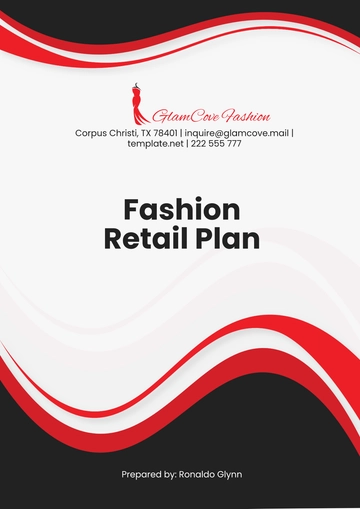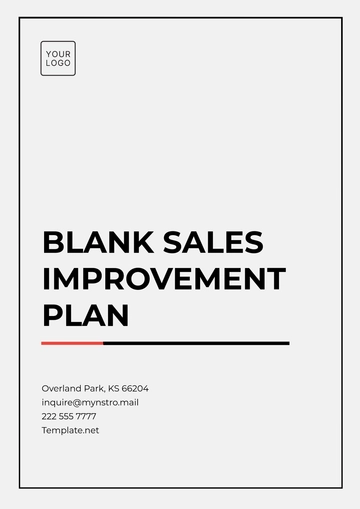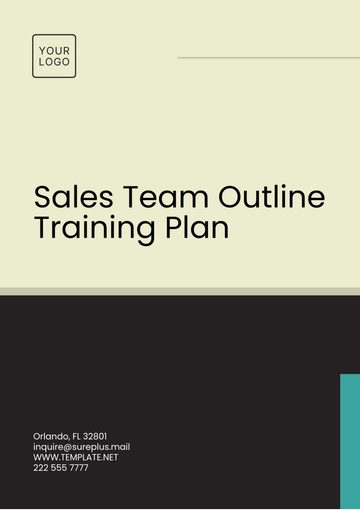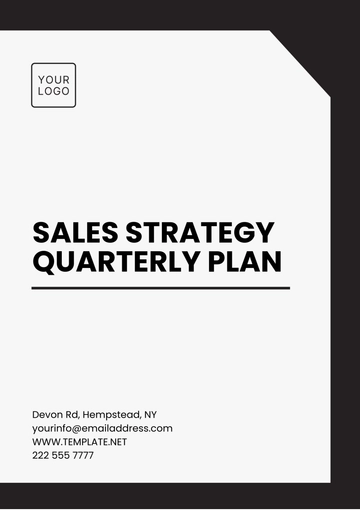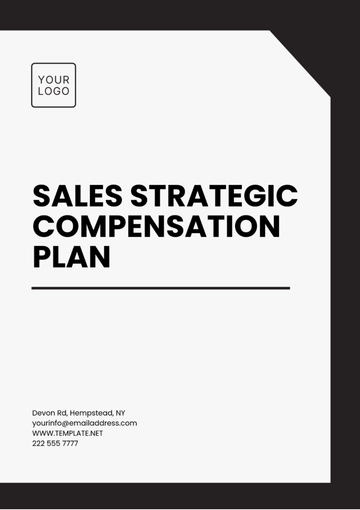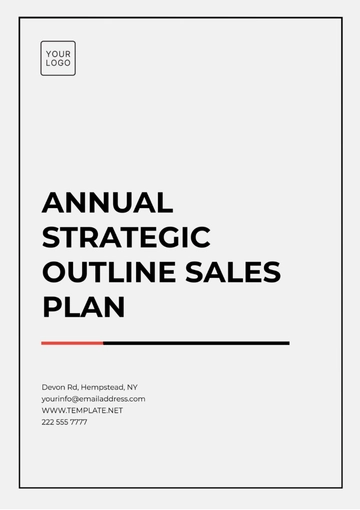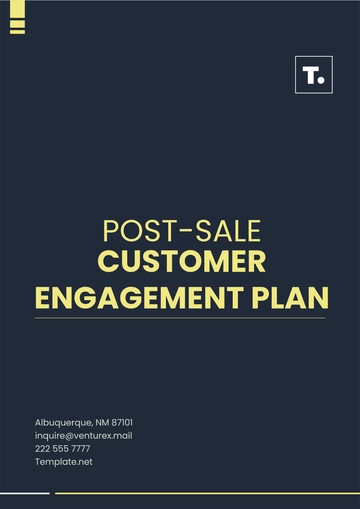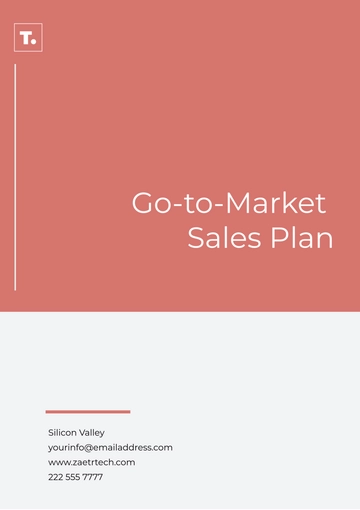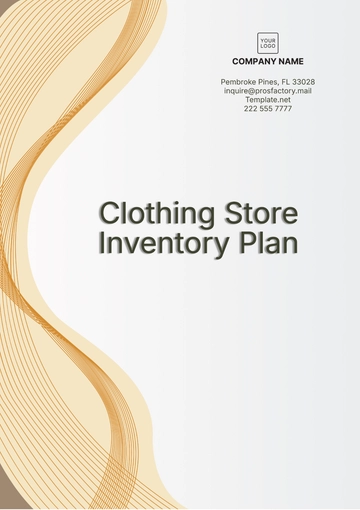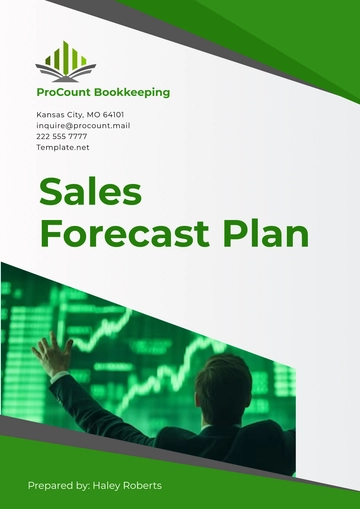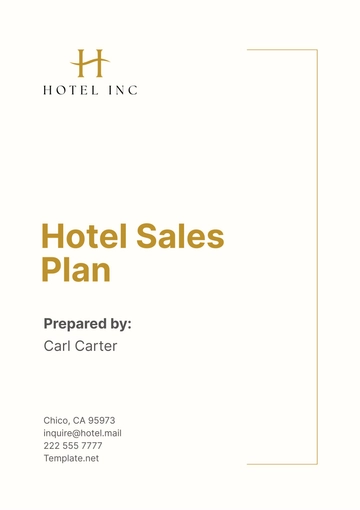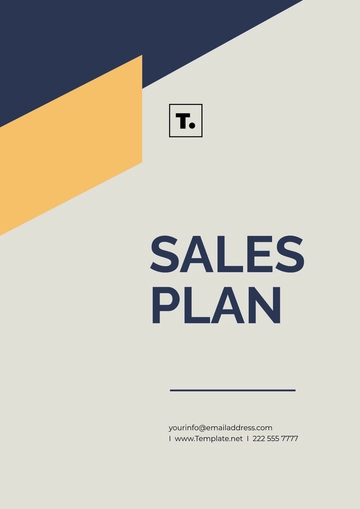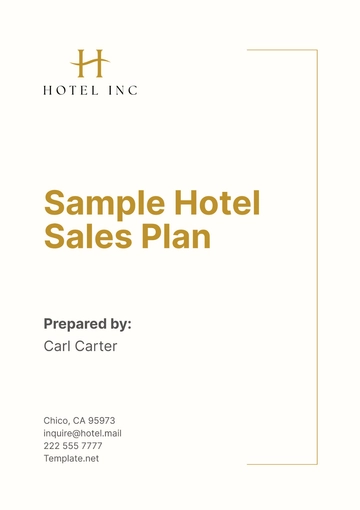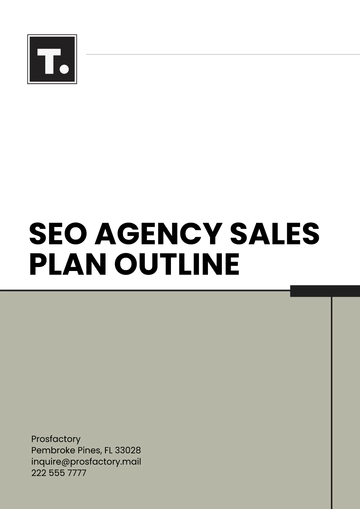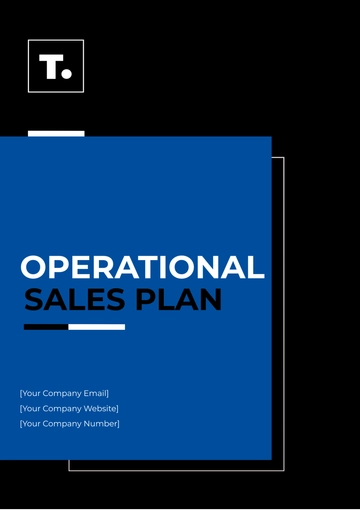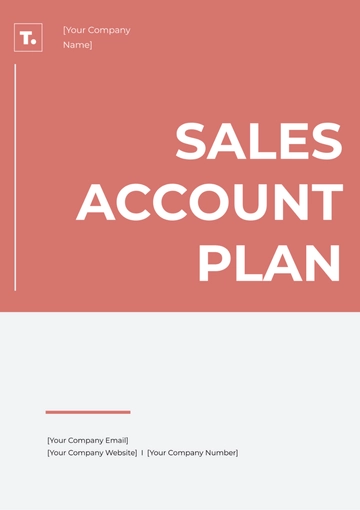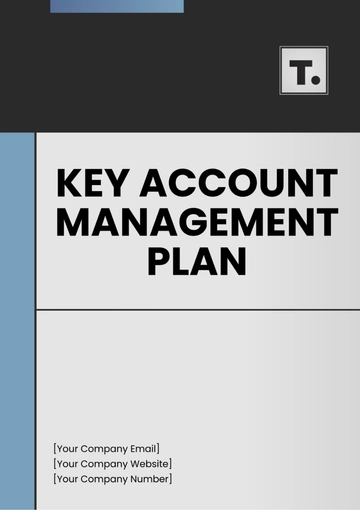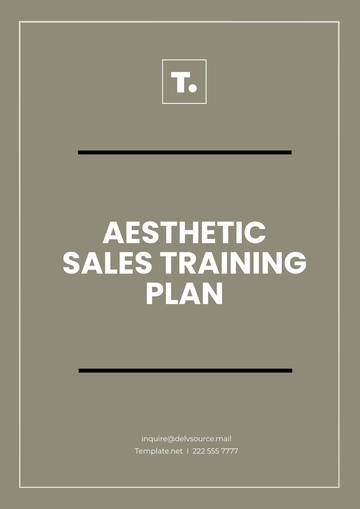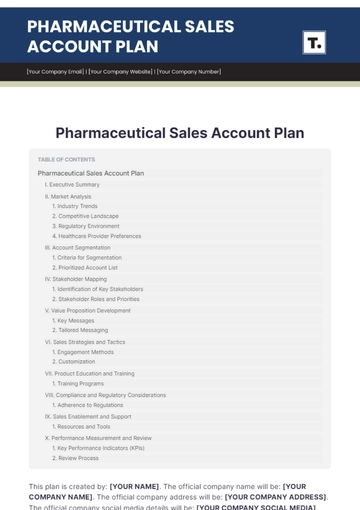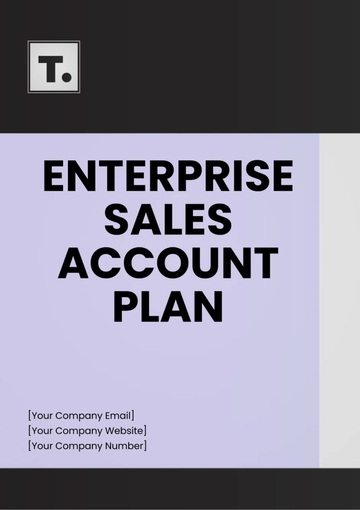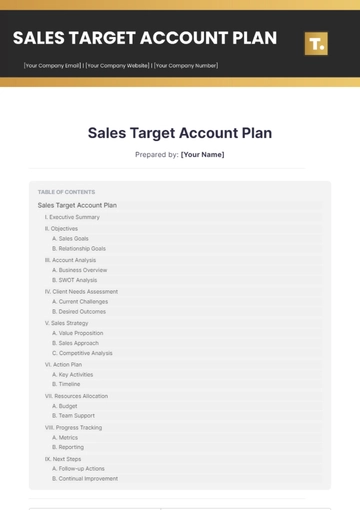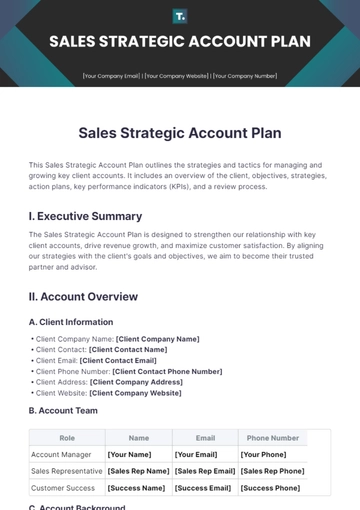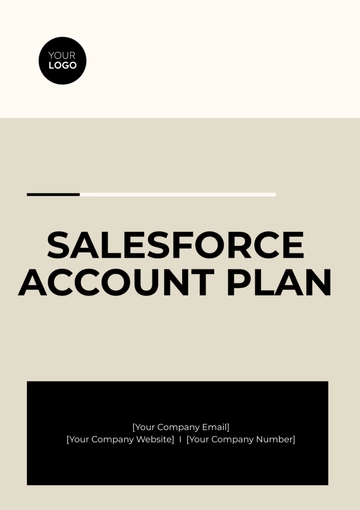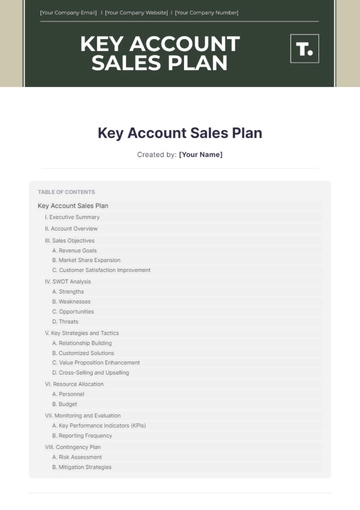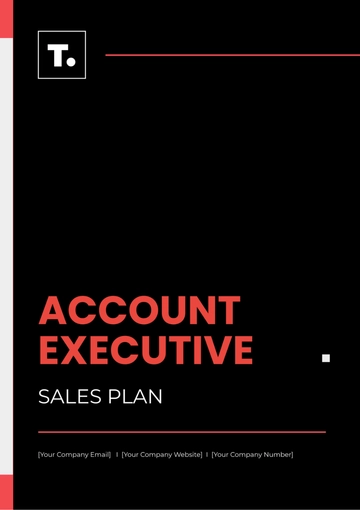Free Sales Presentation Strategy Plan
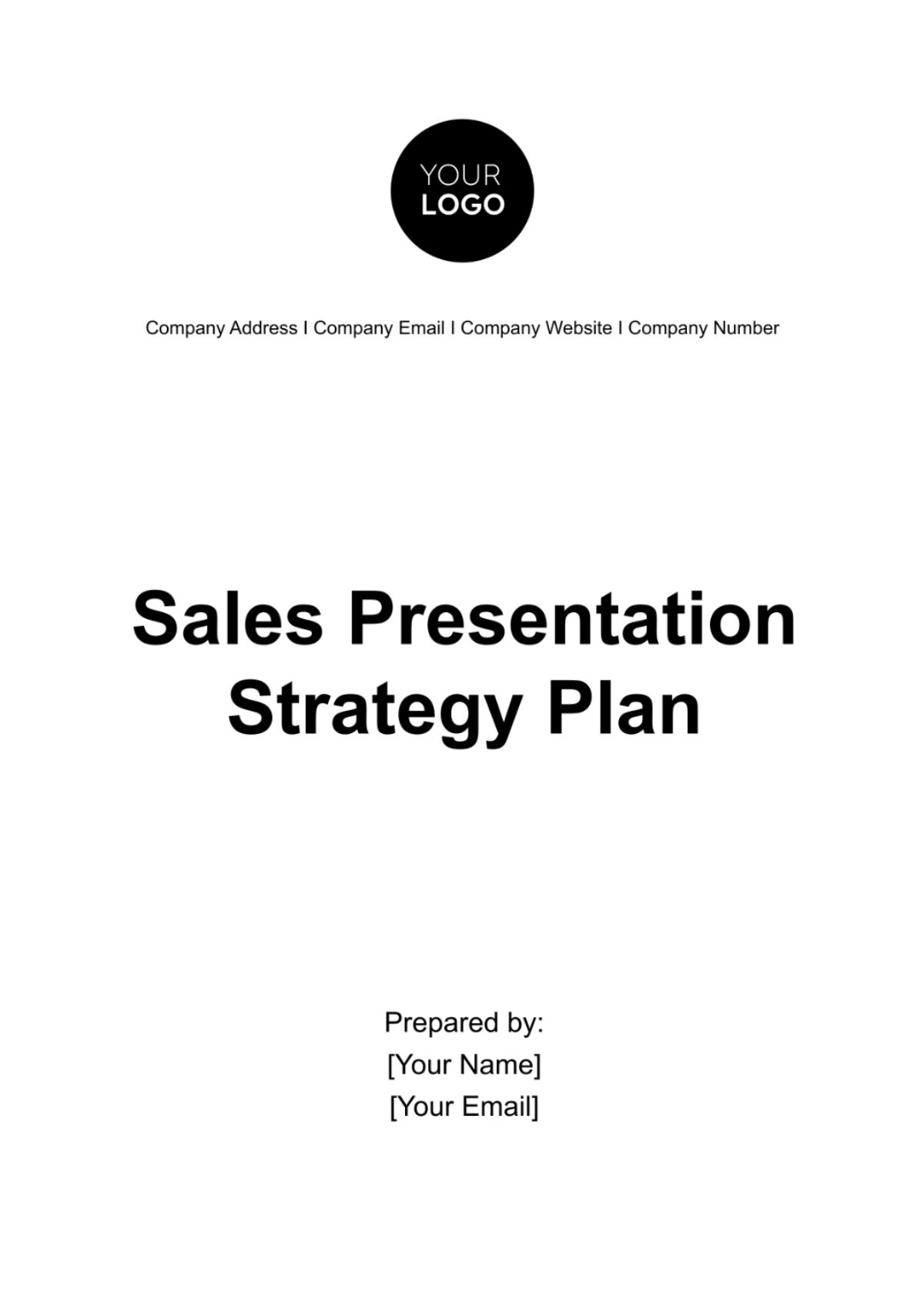
I. Presentation Objective
In this section, we outline the primary and secondary objectives of the presentation, emphasizing the significance of each:
A. Primary Objective
The primary objective of this presentation is to secure follow-up meetings with a minimum of five potential clients for in-depth product demonstrations and further negotiations. These follow-up meetings are pivotal as they provide an opportunity to engage with potential clients on a more personalized level, address their specific needs, and move them closer to a decision to adopt our software, [Product Name]. Achieving this primary objective means we are successfully moving potential clients through the sales funnel towards conversion.
B. Secondary Objective
While securing follow-up meetings is our primary goal, our secondary objective is equally important. We aim to educate the audience about [Product Name] and its capabilities. This educational aspect is crucial, especially for those audience members who might not be familiar with our software. By imparting a clear understanding of our software's features, benefits, and unique selling points, we set the foundation for informed decision-making. Even if some attendees do not immediately commit to a follow-up meeting, they should leave the presentation with a solid grasp of the value our software offers.
By having both primary and secondary objectives, we ensure that the presentation is not solely focused on securing immediate commitments but also on providing value and knowledge to the entire audience. This holistic approach enhances our brand's reputation and fosters trust among potential clients, making them more likely to engage with us in the future.
II. Target Audience Analysis
In this section, we delve deeper into the analysis of our target audience, which consists of Chief Information Officers (CIOs), IT Managers, and Decision-Makers in the healthcare industry. Understanding their needs, preferences, and familiarity with our software is crucial for tailoring our presentation effectively:
A. Audience Needs
The healthcare industry is characterized by a heightened demand for enhanced data security, strict compliance with HIPAA regulations, and a constant pursuit of cost-efficiency. Our audience is primarily concerned with safeguarding sensitive patient data, ensuring legal compliance, and optimizing operational costs. Recognizing these needs allows us to highlight how [Product Name] directly addresses these concerns.
B. Audience Preferences
Our audience members are professionals with diverse roles and responsibilities, but they share some common preferences. They appreciate visual demonstrations that vividly illustrate complex concepts. They value case studies and real-world examples that offer practical insights into how our software can benefit their organizations. By aligning our presentation with these preferences, we engage the audience on a level that resonates with their professional experiences.
C. Audience Familiarity
The familiarity of our audience with [Product Name] varies. Some attendees may have a basic understanding of our software, having researched it in advance, while others might be encountering it for the first time. Recognizing this diversity in familiarity is vital for ensuring that our presentation accommodates both the experienced and the newcomers. For those who are already acquainted with our software, we will provide advanced insights, while for beginners, we will provide a thorough introduction.
By addressing the specific needs and preferences of our audience, as well as tailoring our content to suit their familiarity with our software, we aim to create a presentation that is not only engaging but also highly relevant and valuable to every attendee. This targeted approach will enable us to establish a strong connection with our audience and increase the likelihood of achieving our presentation objectives.
III. Product/Service Understanding
This section is dedicated to a profound understanding of our flagship product, [Product Name], which is at the core of our presentation strategy. A comprehensive grasp of the software's features, benefits, and competitive advantages is essential:
A. Understanding
Our team has immersed itself in the intricacies of [Product Name]. This means we are not only aware of the software's capabilities but are deeply knowledgeable about how it can revolutionize data security and operational efficiency within the healthcare industry. We've invested time in exploring the software's architecture, its real-time threat detection algorithms, the robust HIPAA compliance tools, and the state-of-the-art encryption protocols it employs. This deep understanding allows us to articulate its value and functionality with confidence.
B. Features
[Product Name] is feature-rich, offering an array of tools designed to meet the specific needs of our healthcare audience. From real-time threat detection that identifies and neutralizes security breaches as they occur to comprehensive HIPAA compliance measures that ensure the protection of patient data, we have a clear understanding of how each feature contributes to the software's overall effectiveness. These features will be presented in a way that highlights their relevance and practicality for our audience.
C. Benefits
Beyond listing features, our team has delved into the tangible benefits of [Product Name]. These benefits extend to our audience in the form of substantial cost savings—up to [30%] in some cases—and a remarkable 15% increase in operational efficiency. We can explain how these benefits translate into real-world advantages for healthcare organizations, ultimately helping our clients enhance their competitiveness and their ability to deliver exceptional care to patients.
Our deep comprehension of [Product Name] allows us to communicate its value effectively and address specific queries and concerns. By demonstrating a thorough understanding of our product, we instill confidence in our audience and convey that our solution is not merely theoretical but a practical and proven asset to their operations.
IV. Presentation Content
Introduction to [XYZ Solutions]: The introduction will set the stage, explaining who [XYZ Solutions] is, our core values, and our mission to enhance data security in the healthcare sector.
Problem Statement: We'll highlight the growing concern of healthcare data breaches, emphasizing the critical need for advanced security solutions.
Introduction to [Product Name]: This section will provide a detailed overview of the software, covering its features, capabilities, and the specific problems it addresses.
Value Proposition: We will present the cost-saving potential, operational efficiency improvements, and how our software ensures strict HIPAA compliance.
Competitive Advantage: Our competitive edge, including real-time threat detection and affordability, will be clearly outlined, alongside comparisons with competitors.
Pricing Packages: This segment will explain the pricing structure and different packages available, including any ongoing promotions or discounts.
Audience Q&A: A dedicated Q&A session will be allocated to address questions, concerns, and curiosities from the audience.
V. Presentation Delivery
The effectiveness of our presentation is not solely dependent on the content we deliver but also on how we engage and interact with our audience. In this section, we outline the key elements of our presentation delivery strategy:
A. Format
The presentation will be delivered in a virtual format using the Zoom platform. This choice is strategic, allowing us to reach a wide and diverse audience. We understand that virtual presentations have become the norm in today's business environment, and we aim to make this experience as seamless and engaging as possible.
B. Delivery Techniques
Our presentation will employ a range of delivery techniques designed to capture and maintain the audience's attention. Storytelling will be a cornerstone of our approach, weaving relatable narratives into the presentation to make complex concepts more understandable and memorable. A key element will be the live real-time software demonstration, which will provide a dynamic and interactive showcase of [Product Name] in action. To involve our audience actively, we will incorporate audience polls at strategic points in the presentation, allowing attendees to participate and express their insights.
By utilizing these delivery techniques, we aim to ensure that our audience remains engaged and attentive throughout the presentation. We understand that information retention is closely tied to engagement, and our approach seeks to maximize both. The virtual format offers a level of interactivity that enhances our ability to connect with our audience effectively.
VI. Visual Aids and Materials
Visual aids and supplementary materials are pivotal in reinforcing the key messages and enhancing the overall understanding of our audience. In this section, we detail the visual and material assets we'll employ:
A. Visual Aids
Our PowerPoint presentation slides have been meticulously crafted to be both informative and visually engaging. They will feature compelling visuals, infographics, and diagrams that illustrate complex concepts with clarity. The visual aids are designed to complement our spoken content, enhancing comprehension and retention. These visuals will also help us convey the specific benefits and features of [Product Name] effectively.
B. Handouts
In addition to the live presentation, we will provide a digital handout that contains invaluable resources. This handout includes in-depth case studies that showcase real-world applications of our software. The handout will also feature product brochures and relevant documentation that attendees can refer to after the presentation. These materials will serve as a reference point and a guide for making informed decisions post-presentation.
The combined use of compelling visuals and supplemental materials ensures that our audience has access to comprehensive information that extends beyond the live presentation. By providing these assets, we facilitate a deeper understanding of our product, and we offer valuable resources that help attendees explore the specifics of [Product Name] at their own pace. These materials not only reinforce our presentation but also serve as valuable takeaways for potential clients.
VII. Handling Objections and Questions
An effective sales presentation acknowledges that objections and questions are natural parts of the engagement process. In this section, we provide insight into our strategy for handling objections and questions:
A. Common Objections
We anticipate that common objections might revolve around data security concerns, particularly given the sensitivity of healthcare data, as well as inquiries about pricing. We have meticulously prepared responses to address these objections comprehensively. For data security concerns, we are ready to explain our robust encryption methods and real-time threat detection capabilities, offering a clear understanding of how [Product Name] safeguards sensitive information. When it comes to pricing inquiries, we will provide a transparent breakdown of our pricing structure, any available discounts, and, most importantly, the Return on Investment (ROI) that clients can expect. Our goal is not only to address objections but to turn them into opportunities to showcase the strengths of our product.
B. Response Strategies
Our response strategies are designed to be informative, empathetic, and persuasive. We will not only provide technical details but also use relatable examples and analogies to make complex topics more understandable. When handling data security objections, we will draw parallels to bank-level security measures, ensuring that attendees grasp the depth of our commitment to their data's protection. Regarding pricing inquiries, we will break down the cost in a way that demonstrates its affordability while highlighting the substantial savings and operational efficiency that [Product Name] brings to healthcare organizations.
C. Interactive Approach
Instead of simply addressing objections in a one-way communication, we encourage an interactive approach. If an attendee objects, we will open the floor for discussion. This approach will enable us to not only provide clear responses but also engage with the audience, address specific concerns, and build trust. It's important to us that the presentation is a two-way dialogue where attendees feel heard and understood.
By effectively handling objections and questions, we aim to alleviate concerns and build confidence in the minds of our potential clients. Our interactive approach and persuasive strategies enable us to turn objections into opportunities for further clarifying the value and advantages of [Product Name].
VIII. Audience Engagement Strategies
Live Audience Polls: Interactive polls will be conducted during the presentation to gauge audience awareness of data security issues.
Interactive Questions: Opportunities for the audience to ask questions and share their concerns throughout the presentation.
Live Demonstration: A live demonstration of [Product Name] with real-time audience involvement, enabling the audience to witness its functionality firsthand.
IX. Rehearsal and Training
Rehearsals: Two comprehensive rehearsals with the presentation team to ensure flawless delivery, smooth transitions, and precise timing.
Training: A dedicated training session for the presentation team, focusing on product knowledge, objection handling, and effective virtual presentation techniques.
X. Technology and Equipment
Setup Check: A thorough check of the Zoom setup, ensuring a stable internet connection, screen sharing capabilities, and high-quality audio and video.
XI. Timing and Agenda
Presentation Time: The total presentation duration is set at [60 minutes] to keep the audience engaged and attentive.
Agenda: The presentation's agenda is structured as follows: Introduction (5 minutes), Problem Statement (10 minutes), Product Presentation (15 minutes), Value Proposition (10 minutes), Competitive Advantage (5 minutes), Pricing and Packages (10 minutes), Q&A (5 minutes).
XII. Presentation Follow-Up
Immediate Follow-Up: Immediate post-presentation thank-you emails to express gratitude for the audience's time and engagement.
Meetings: The follow-up plan includes scheduling follow-up meetings for interested prospects to provide in-depth product demonstrations and address specific needs.
Materials: Providing requested materials, including case studies, brochures, and any additional resources needed to aid decision-making.
XIII. Contingency Planning
Technical Backup: A backup Wi-Fi connection is arranged in case of any unforeseen internet connectivity issues.
Prepared Materials: Prepared backup slides and materials in the event of potential technical glitches.
XIV. Metrics and Evaluation
Key Performance Indicators: Key performance indicators include the number of follow-up meetings scheduled, conversions to product trials, and engagements measured during the presentation.
Audience Feedback: Post-presentation surveys will be used to collect valuable feedback from the audience, helping us continually improve our presentation.
XV. Team Roles and Responsibilities
Presenter: [John Smith] will take on the role of the primary presenter, guiding the audience through the presentation.
Tech Support: [Sarah Johnson] will provide technical support during the virtual presentation to ensure a seamless experience for the audience.
Follow-Up Contacts: The Marketing Team is responsible for post-presentation follow-ups, scheduling meetings, and providing requested materials.
- 100% Customizable, free editor
- Access 1 Million+ Templates, photo’s & graphics
- Download or share as a template
- Click and replace photos, graphics, text, backgrounds
- Resize, crop, AI write & more
- Access advanced editor
Discover the ultimate sales arsenal with Template.net's Sales Presentation Strategy Plan Template. Crafted by experts, this editable and customizable blueprint empowers you to tailor your pitch effortlessly. Harness the power of our AI Editor Tool to refine your message and captivate your audience. Elevate your sales game today with this indispensable tool.
You may also like
- Finance Plan
- Construction Plan
- Sales Plan
- Development Plan
- Career Plan
- Budget Plan
- HR Plan
- Education Plan
- Transition Plan
- Work Plan
- Training Plan
- Communication Plan
- Operation Plan
- Health And Safety Plan
- Strategy Plan
- Professional Development Plan
- Advertising Plan
- Risk Management Plan
- Restaurant Plan
- School Plan
- Nursing Home Patient Care Plan
- Nursing Care Plan
- Plan Event
- Startup Plan
- Social Media Plan
- Staffing Plan
- Annual Plan
- Content Plan
- Payment Plan
- Implementation Plan
- Hotel Plan
- Workout Plan
- Accounting Plan
- Campaign Plan
- Essay Plan
- 30 60 90 Day Plan
- Research Plan
- Recruitment Plan
- 90 Day Plan
- Quarterly Plan
- Emergency Plan
- 5 Year Plan
- Gym Plan
- Personal Plan
- IT and Software Plan
- Treatment Plan
- Real Estate Plan
- Law Firm Plan
- Healthcare Plan
- Improvement Plan
- Media Plan
- 5 Year Business Plan
- Learning Plan
- Marketing Campaign Plan
- Travel Agency Plan
- Cleaning Services Plan
- Interior Design Plan
- Performance Plan
- PR Plan
- Birth Plan
- Life Plan
- SEO Plan
- Disaster Recovery Plan
- Continuity Plan
- Launch Plan
- Legal Plan
- Behavior Plan
- Performance Improvement Plan
- Salon Plan
- Security Plan
- Security Management Plan
- Employee Development Plan
- Quality Plan
- Service Improvement Plan
- Growth Plan
- Incident Response Plan
- Basketball Plan
- Emergency Action Plan
- Product Launch Plan
- Spa Plan
- Employee Training Plan
- Data Analysis Plan
- Employee Action Plan
- Territory Plan
- Audit Plan
- Classroom Plan
- Activity Plan
- Parenting Plan
- Care Plan
- Project Execution Plan
- Exercise Plan
- Internship Plan
- Software Development Plan
- Continuous Improvement Plan
- Leave Plan
- 90 Day Sales Plan
- Advertising Agency Plan
- Employee Transition Plan
- Smart Action Plan
- Workplace Safety Plan
- Behavior Change Plan
- Contingency Plan
- Continuity of Operations Plan
- Health Plan
- Quality Control Plan
- Self Plan
- Sports Development Plan
- Change Management Plan
- Ecommerce Plan
- Personal Financial Plan
- Process Improvement Plan
- 30-60-90 Day Sales Plan
- Crisis Management Plan
- Engagement Plan
- Execution Plan
- Pandemic Plan
- Quality Assurance Plan
- Service Continuity Plan
- Agile Project Plan
- Fundraising Plan
- Job Transition Plan
- Asset Maintenance Plan
- Maintenance Plan
- Software Test Plan
- Staff Training and Development Plan
- 3 Year Plan
- Brand Activation Plan
- Release Plan
- Resource Plan
- Risk Mitigation Plan
- Teacher Plan
- 30 60 90 Day Plan for New Manager
- Food Safety Plan
- Food Truck Plan
- Hiring Plan
- Quality Management Plan
- Wellness Plan
- Behavior Intervention Plan
- Bonus Plan
- Investment Plan
- Maternity Leave Plan
- Pandemic Response Plan
- Succession Planning
- Coaching Plan
- Configuration Management Plan
- Remote Work Plan
- Self Care Plan
- Teaching Plan
- 100-Day Plan
- HACCP Plan
- Student Plan
- Sustainability Plan
- 30 60 90 Day Plan for Interview
- Access Plan
- Site Specific Safety Plan

